Wire and Cable Basics
Wire and CableBasics
In this chapter, you will learn about
- Wire types, insulation and jacket materials
- Cable types, construction, and characteristics
- Cable performance, attenuation, cancellation, and interference
Just like a house is built on its foundation, a home automation network is built on its wiring. Home networks of all types, and yes, even wireless networks, are built on a network of electrical, communications, and audio/visual wiring.
The myriad standards, guidelines, and cable and wire types can be a bit confusing, but when you organize them by the various systems in a house, it’s really not all that complicated. This chapter focuses on the different cable types and their construction, performance, specifications, and how each is typically used in a home automation project. A variety of different wire and cable is used in home electrical, audio, video, and control systems. This chapter provides you with the basics on the wire or cable used in each of these different applications in a home.
Electrical Wiring and Cable
Residential electrical wiring actually includes all of the wiring in a home, but for now we want to focus on the low voltage wiring. If you plan on using any of this wiring as a component of a home network, of any kind, it is important for this wiring to conform to certain standards and codes.
Low Voltage versus High Voltage
When installing wire and cable in a home, you must be aware of the voltage specification of the cable in use. There are certain cable types that are specified as low voltage and those specified as high voltage. Low voltage cable is designed to carry lower levels of alternating current (AC) and direct current (DC) voltages than is high voltage. I know that may sound like a no-brainer, but there is enough of a difference between these two cabling types that electricians are certified separately for installing one or the other. Table 1-1 lists the basic cable categories and the voltage range each is specified to carry.
|
Cable Type |
DC Voltage |
AC Voltage |
Usage |
|---|---|---|---|
|
Extra Low Voltage (ELV) |
< 120 volts (V) |
< 50V |
Audio, video, telephone, data cables |
|
Low Voltage |
120V – 750V |
50V – 500V |
Standard household electrical wiring |
|
High Voltage |
> 1.5 kV |
> 1 kV |
Power lines to a home |
Low Voltage Wiring
No specific definition exists for what is generally called low voltage wiring. In some references, low voltage is circuit wiring of less than 30 volts (V) of alternating current (AC) or 60V of direct current (DC). Another reference defines it as being less than 50V AC and yet another defines it as being between 0 and 150V AC and DC. In effect, the term low voltage wiring, which typically is used to describe communications, speaker, security and control signal wiring, is more of a slang term than a specific reference. However, in common usage, electricians use low voltage to refer to less than 50 volts and wire gauges less than 16 AWG.
Low voltage wiring is defined as being one of five types of circuits:
- Communication circuitsThese circuits carry data signals between devices, typically connected to a network of devices. Communication circuits, such as data networking, telephone, and in some cases, electrical cabling, are explained in detail in Chapters 3 and 10.
- Signal circuitsA signal circuit is an electrical circuit that supplies power to an appliance or electrical device that produces a visual light signal or audible sound signal. Examples of signals circuits are doorbells, buzzers, signal lights, fire or smoke detectors, alarm systems, and other types of security systems.
- Remote control circuitsA remote control circuit is an electrical circuit that controls one or more other circuits, motor controllers, magnet contacts, or electrical relays. A remote control circuit controls the supply of power to electrical equipment like appliances, lighting, and heating devices or provides command signals to control their operation.
- Motor control circuitsA circuit that carries electric signals that control the function of a device or motor controller, but not the main electrical power service.
- Power-limited circuitsCircuits that aren’t used for signaling or remote control where the power on the line is limited are power-limited circuits. A low voltage lighting circuit that includes 120V to 12V transformers to drive 12V lamps is an example of a power-limited circuit. Power-limited circuits are limited to 30V.
Voltages
There are many voltage numbers around. You may read or hear about 110V, 117V, 120V, 208V, 220V, or even 480V. Different countries or regions of the world have different electrical systems and each electrical system may support a different voltage.
In North America, the electric companies supply a split-phase 240V feed, which is two 120V (plus or minus 5V) feeds, to its residential and commercial customers. The wiring in each building has built-in resistance that can drop the voltage in the raw feed to 110V or 220V at the outlet. So, for all purposes, 110V is the same as 120V, regardless of how electrical devices or installation specification are labeled. If a product is labeled as 110V, it merely means that the product is capable of operating at electrical levels as low as that.
However, 208V is not a reduction of 240V. This is the voltage of a 3-phase Y-circuit that has 120V from any neutral to hot. The voltage of a 3-phase Y-circuit that runs 277V from hot to neutral is 480V. However, most motors intended to run on 480V are typically labeled as 440V. Confused? Don't be. Home networking is mostly a 12 and 24 volt environment.
Low Voltage Classes
Low voltage circuits are divided into three circuit classes, as detailed in Table 1-2.
|
Class |
Type |
Volts |
Volt-Amps (Power) |
|---|---|---|---|
|
1 |
Power-limited, |
30 |
1000 |
|
1 |
Remote control and signaling |
600 |
No limits |
|
2 |
DC |
30 |
100 |
|
3 |
DC |
>30V |
>0.5, but not more than 100 VA |
A few examples of Class 2 circuits are low voltage lighting control, thermostats, security systems, intercoms, audio systems, and computer networks. Some security systems, intercoms, and audio systems can also be Class 3 circuits. Each circuit class also defines the cable class that must be used. On Class 2 and 3 circuits, the cable used must be rated for Class 2 and 3 circuits, respectively. The manufacturer’s specifications should indicate the rating class of each cable it sells and the class rating should be marked on the cable as CL2 (Class 2) or CL3 (Class 3).
Electrical Wiring
Generally, home automation projects rarely have to deal with electrical wiring, except to plug a controller or network adapter into an outlet. However, if you are installing home network wiring into open walls or retrofitting wiring into an existing wall, you should be able to at least recognize common electrical service wiring and its characteristics.
| Note |
Most of these electrical wire characteristics also are found in low voltage wiring as well. |
The most common electrical wiring used in home construction today are
- Modern non-metallic (NM)This wire is made up of two solid copper or aluminum core wires insulated with plastic vinyl and a bare copper ground wire sheathed with a paper layer and an outer vinyl jacket. Modern NM wiring is flexible, durable, and moisture-resistant, which is why it is the most popular choice for residential electric wiring. See Figure 1-1.

Figure 1-1: The construction of modern non-metallic electrical wiring. - Underground feeder (UF)This wire, which is also referred to as NMC cable, is very much like NM cable, except that the three copper wires (two insulated and one bare) are embedded in solid plastic vinyl sheathing. UF wire is the best choice for damp or buried installations.
- Zip wireThis wire type is lighter duty than most residential wiring and has very limited use. Most lamp cords are zip wire, which gets its name from the fact that the two conductors are molded together, but can be easily separated by pulling them apart manually. Figure 1-2 illustrates the composition of a zip wire.
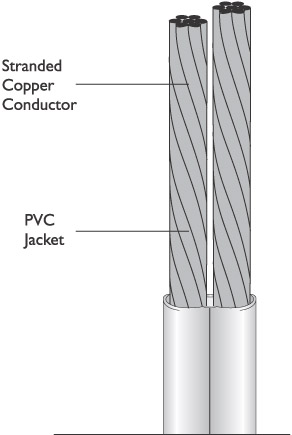
Figure 1-2: The makeup of zip wire
Voltages Around the World
Voltage can have different values, especially when it comes to wiring ratings and specifications. For example, common voltages used in wiring specifications are 110V, 117V, 120V, 208V, 220V, and 480V. Different countries and world regions have different electrical systems and each electrical system could specify and carry a different voltage than its neighboring countries.
In North America, the electric companies supply a split-phase 240V, 60 Hertz (Hz) feed, which is made up of two 120V (plus or minus 5V) feeds, to residential and commercial customers. The wiring in each building has built-in resistance that drops the voltage of the raw feed down to 110V or 220V at the outlet. As a result, electrical service in North America is referred to as 110V (the net of the nominal 120V feed) or 220V (net of nominal 240V).
In European countries, electricity is supplied at the nominal voltage of 220V to 230V. Like electricity in North America, the actual voltage can vary by 10 percent. Some countries offer 110V at the outlet, but all European electricity is 50 Hz (aka 50 cycles), and this difference is enough to require North American travelers to use a converter, just like European travelers must do in North America.
Some older wire types you may encounter in a house are
- Flexible armored cableThis two-wire type of electric cable, which is also called Greenfield or BX wire (see Figure 1-3), was very popular from the 1920s to the 1940s. The metallic armoring around the outside of the cable provides the grounding.
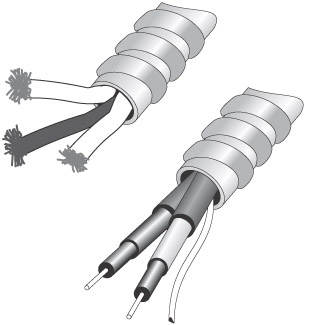
Figure 1-3: BX cable is a type of armored cable. - Metal conduitFrom the 1940s to the 1970s, two insulated wires were installed in rigid metal conduit tubing. The metal of the conduit provided the grounding. Metal conduit installation is still required in some areas for bare wire installations in basements, foundation crawl space, attics, and garages. It is also required in some cities. Check your local codes.
- Early NMThis two-wire cable was popular from the 1930s to the mid-1960s. It is made up of a flexible rubberized fabric jacket that surrounds two solid copper wires with rubber insulation and paper sheathing inside the outer jacket. Early NM wire had no grounding wire.
- Knob and tubeWires covered with a rubberized fabric material, called “loom,” was strung over ceramic insulators (knobs) and ceramic tubes through studs and joists (see Figure 1-4). This is a very old and obsolete wiring system found in homes constructed before 1940.
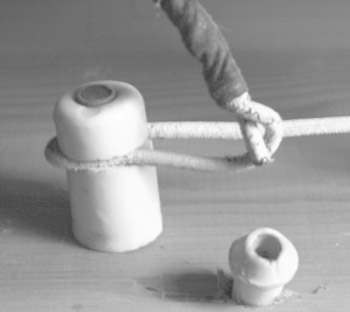
Figure 1-4: Knob and tube insulators were used in homes built before 1940.
Photo courtesy of Markus Burns.
Residential Wire Gauge and Characteristics
The wire gauge used in a home depends on the number of amperes on a particular circuit. For example, if a circuit has 20 amps, a 12-gauge wire should be used. See Table 1-3 for a listing of a few of the common circuit amps and the appropriate wire gauge to use. Remember that a smaller gauge means a bigger and less flexible wire. For wire runs longer than 100 feet, or placed inside a conduit, or installed in a bundle with other wires, the next heavier gauge wire should be used to avoid voltage drops and to overcome heat problems.
|
AWG/B&S* |
CSA |
Circuit Amps |
Ohms per 1K feet |
Common Usage |
|---|---|---|---|---|
|
24 /Cat 5e |
0.205 |
2.1 |
28.6 |
Communications |
|
18 – 22 |
0.0480 – 0.0280 |
10 – 8 |
6.386 – 16.200 |
Thermostats, doorbells, security systems |
|
16 |
0.051 |
12 |
4.016 |
Audio |
|
14 |
0.0800 |
15 |
2.524 |
Light fixtures, receptacles |
|
12 |
0.1040 |
20 |
1.619 |
Light fixtures, receptacles |
|
10 |
0.1280 |
30 |
1.018 |
Air conditioner (AC), clothes dryer |
|
8 |
0.1600 |
40 |
0.641 |
Electric range, central AC |
|
6 |
0.1920 |
60 |
0.403 |
Central AC, electric furnace |
|
* AWG stands for American Wire Gauge; B&S refers to Brown and Sharpe, which is equivalent to AWG; and CSA refers to the Canadian Standards Association. |
||||
Twisted Pair Cable
Twisted-pair wiring is by far the most popular installed media for networking in just about any type of network for many reasons, including that it is inexpensive, easy to handle, and readily available. Twisted-pair (TP) wire is the de facto standard for both Ethernet and Token Ring networks.
Twisted-pair wire gets its name from its construction. Pairs of 24-gauge (or heavier) wire are twisted around each other to reduce the impact of cancellation between the two wires. Two types of twisted-pair wire are available: unshielded and shielded. Unshielded twisted-pair (UTP) wire, shown in Figure 1-5, doesn’t include any EMI shielding to speak of, while shielded twisted-pair (STP) wire, shown in Figure 1-6, has an extra wrapping of foil to help protect the inner wires from EMI and cancellation effects.
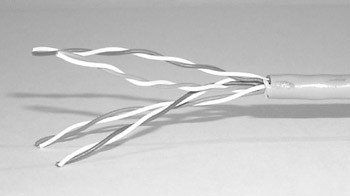
Figure 1-5: The construction of unshielded twisted-pair (UTP) wiring
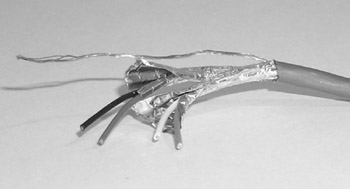
Figure 1-6: Shielded twisted-pair (STP) wiring has a foil wrapper to protect it from EMI.
AWG and Metric Wire Sizes
Wire, including the wires bundled into a cable, is measured in a variety of sizes throughout the world. In the U.S., wire is measured using the AWG or American Wire Gauge standard. AWG measures the diameter of the wire using a fairly complicated formula that boils down to for every 6 gauge decrease (say, from 24 AWG to 18 AWG), the diameter of the wire doubles in measurement.
Many countries around theworld use metric wire gauges that states a wire gauge as ten times the wire’s diameter in millimeters (mm). For example, a 40 gauge metric wire is 4mmin diameter. So, using the metric wire gauge system, as the wire diameter increases so does the wire gauge. This can cause some confusion between the AWG system and the metric wire size system, so generally metric wire sizes are stated in millimeters and not as metric gauges. Table 1-4 shows a comparison of AWG wire gauge and metric wire size of wires commonly used in structured wiring systems.
|
AWG (in millimeters) |
Metric Wire Size |
|---|---|
|
10 |
2.588 |
|
12 |
2.304 |
|
14 |
1.628 |
|
16 |
1.290 |
|
18 |
1.024 |
|
20 |
0.081 |
|
22 |
0.065 |
|
24 |
0.511 |
|
26 |
0.404 |
|
28 |
0.320 |
UTP cable is designated for various usages through a wire category specification that divides the various grades of UTP into a series of categories. Each category, of the seven defined to date, defines a specific number of wire pairs, a number of radial twists per foot (or twists per inch), the number of wire pairs, the bandwidth rating, the maximum segment (run) length for performance, and its recommended networking usage. Table 1-5 details the various UTP wire categories, which are referred to as “Cats.” The most common cable categories used in structured wiring systems are Cat5, Cat5e, and Cat 6.
|
Category |
Bandwidth |
Wire Pairs |
Maximum Segment Length |
Applications |
|---|---|---|---|---|
|
Cat 1 |
128 Kbps |
2 |
100 meters |
POTS, ISDN, door bell wiring, speaker wire |
|
Cat 2 |
4 Mbps |
4 |
100 meters |
Token Ring networks |
|
Cat 3 |
10 Mbps |
4 |
100 meters |
10BaseT |
|
Cat 4 |
10 – 16 Mbps |
4 |
100 meters |
10 Mbps Ethernet 16 Mbps, Token Ring |
|
Cat 5 |
100 Mbps |
4 |
100 meters |
100BaseT, ATM, CDDI |
|
Cat 5E |
200 Mbps |
4 |
100 meters |
1000BaseT |
|
Cat 6 |
600 Mbps |
4 |
100 meters |
CDDI, 1000BaseT |
|
Cat 7 |
1 Gbps |
Undefined |
Multiple wire pairs with each twist insulated |
Twisted pair cable gets its name from its construction style. Most TP cables have multiple pairs of wire, typically two or four pairs. Each wire pair is wrapped or twisted around one another to help protect the wires from interference and crosstalk . The more twists in the wires, the better the protection.
In North America, UTP is the most commonly used cable for low voltage (LV) installations. However, outside of North America, shielded twisted-pair (STP), and its two variations, screened twisted-pair (ScTP) and foil twisted pair (FTP) wiring (see Figure 1-7) are commonly used. ScTP and FTP include an overall shielding layer, but don’t provide as much protection from interference as STP.
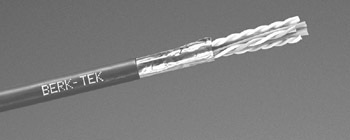
Figure 1-7: Foil-wrapped twisted pair cabling (FTP) is commonly used outside of the U.S.
Photo courtesy of Berk-Tek.
UTP cable carries a variety of rating codes, which are assigned by the product performance and safety authorities and testing laboratories. The primary rating codes for UTP cable are defined by the NEC (National Electric Code), published by the National Fire Protection Association. Table 1-6 lists the primary UTP cable ratings.
|
Rating |
Description |
|---|---|
|
CM |
General building cables suitable for non-plenum and riser application. |
|
CMP |
Horizontal cabling that is suitable for installation in ducts and plenums without conduit. |
|
CMR |
Riser (vertical) cabling that is suitable for use in vertical shaft installations. |
Coaxial Cable
Coaxial cable is constructed of a single inner core wire conductor that is encased in a layer of dielectric insulation, which is then wrapped by a wire mesh outer conductor and shield. A plastic sheathing covers the cable. Some manufacturers also add additional layers of mesh or foil shielding between the mesh and the outer jacket. Figure 1-8 illustrates the construction of a coaxial cable.

Figure 1-8: The layers of an RG6 coaxial cable
Coaxial cable is called single-ended cable because it has a single signal path and a single return path. The core wire carries the positive signals to the next device and the braided mesh layer of the cable carries any return signals.
The different classes of coaxial cabling that are commonly used in residential systems are
- RG6This type of coaxial cable is a 75-ohm cable commonly used with digital satellite systems, analog television, VCRs, CCTV, CATV. RG6 coaxial cable is the minimum requirement for many digital television systems and for television antenna system in multidwelling buildings. RG6 cables are typically terminated with F-type connectors.
- RG11This type of coaxial cable is fairly stiff and difficult to work with. It was once fairly popular with Ethernet data networks and is included in the IEEE 802.3 Ethernet specifications as 10Base2. RG11 coaxial cabling is most commonly terminated with BNC connectors. This cable is occasionally used for long cable runs for digital television feeds.
- RG58This type of low-loss coaxial cable is a 50-ohm cable with a diameter of 0.195-inches that is a good general purpose cable commonly used for security systems and video display applications. RG 58 cables are commonly terminated with BNC connectors.
- RG59This coaxial cable type is a low-loss 100-ohm cable with a diameter of just under 1/4-inch that is a general purpose cable that can carry about 20 percent higher frequencies and a bit longer attenuation limit than RG58 cable. RG59 cable is suitable for basic analog television antennas in homes and for CCTV on short cable runs. RG59 cable is commonly terminated with F-type connectors.
Fiber Optic Cable
Fiber optic cabling (see Figure 1-9) is certainly an option for installing a home network, but it’s not usually a particularly practical one. While fiber optic is extremely fast, it can be difficult to work with, its interface devices are relatively expensive, and copper wire technologies have advanced to the point that they are capable of transmitting multiple CD- or DVD-quality streams simultaneously. Wiring with fiber optic cabling in home is getting it ready for the future and probably won’t be connected and used at the time of installation.
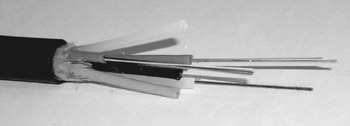
Figure 1-9: A multi-strand fiber optic cable
The fiber optic cabling used in home installations is typically multimode cable. Fiber optic cable is either single-mode or multimode. Single-mode cable carries a single system, but over very long distances. Multimode fiber optic cable is capable of carrying multiple signals, but over a shorter distance, which are still far beyond the requirements of just about any home.
Audio and Video Wire and Cable
If you understand how water flows through a hose, then you essentially understand the physics of how electrical waveforms travel through an audio/video cable. Just like a water hose stores and releases water, when an audio signal is transmitted, the audio/video cable stores (voltage) and releases (current) an electrical wave at certain frequencies and amplitudes and are generally combined under the term frequency. An audio/video signal consists of a collection of high and low frequency waves.
Another function of an audio/video cable is its ability to release or pass the audio signal to the next component (amplifier, speaker, or the like) at the right time, without slowing down the signal. A cable with the ability to release the signal at the right time is called in-phase. Not all cables are able to efficiently carry (store and release) audio signals at all frequencies. Virtually every audio cable can carry high frequencies (above 1 KHz) fairly efficiently. However, the ability for a cable to remain in-phase diminishes as the frequencies drop below 450 Hz. When this happens, the lower frequencies are produced out-of-phase, or reproduced later than the higher frequencies.
Balanced Audio Cables
A balanced audio cable uses both positive and negative carriers, like a coaxial cable, but they also add a grounding carrier as well. In what I’ll call an unbalanced cable, the grounding signals are combined onto the negative carrier.
A balanced audio cable is used in high-end or professional microphone, line-level balanced analog audio, extended distance runs, and wiring interconnected to a patch panel, is made up of two twisted-pair insulated wires, commonly copper, and a separate grounding wire or mesh shield (see Figure 1-10).
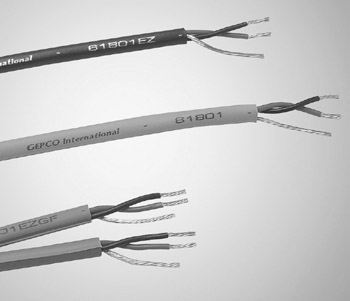
Figure 1-10: Samples of balanced audio cables
Photo courtesy of Gepco International, Inc.
Frequency, Amplitude, and Hertz
No, this isn't the name of an audio industry law firm; these are the properties that characterize the parts of an audio signal.
- AmplitudeThe height of an audio signal, which translates into the volume of each part of the signal.
- FrequencyThe number of cycles (waves) for a sound in a second. Frequency translates to the pitch of a sound. Every sound has pitch, a tiny bell has high pitch and a high frequency, and a bass drum has low pitch and a low frequency. Frequency is measured in Hertz.
- HertzThe measurement of the number of cycles occurring in an audio wave in one second. One wave, measured from the center of the raise in amplitude to the center of the decline in amplitude is one Hertz, which is named after Heinrich Hertz, the discoverer of this phenomenon.
Parallel Pair Wiring
This type of wiring, which resembles lamp cord, is made up of two separate conductors (a positive and a negative) that are encased in a single plastic or rubber insulating jacket (see Figure 1-11). This type of wiring is inexpensive, but doesn’t provide much protection from external interference. Parallel pair wiring is commonly referred to as speaker wire.

Figure 1-11: Parallel pair wire is commonly used for speaker wire.
Parallel wire is available in a variety of wire gauges, ranging from 8-gauge on the high-end to 24-gauge on the low end. However, the gauge that should be used is dependent on a number of factors. A cable with conductors too thin for the signals generated by the amplifier will produce a degraded sound quality with loss in the lower frequencies. In contrast, a cable that is too heavy may be too awkward to work with easily and will definitely cost more.
| CROSS-REFERENCE |
Chapters 15 and 16 discuss speaker and audio cabling in detail. |
| Note |
Speaker wire and parallel cable are often advertised as “oxygen-free.” What this means is that the cable has no corrosion. As a cable is exposed to the air, it can begin to darken in color, which means it is oxidizing. In fact, if a copper wire is green, it is likely fully oxidized. |
Video Cables
There are a variety of cables that can be used with video systems. The primary types of video cable are
- CoaxialThis cable is the standard used for cable television connections. Coaxial cable can be terminated with either a BNC or an RCA connector (see Chapter 2). Although it is developing other applications, such as transmission of IR signals, coaxial cable is used primarily for antenna and cable inputs and video distribution.
- Component (also called digital component)The newest of the cable and connector types that provides the best picture quality. The video signal is separated into individual red, green, and blue (RGB) color components, which results in better color and clarity. The connection for a 3-channel component cable has three plugs, one for each color component. Component cable is available in 3, 4, or 5 channel (wire run) configurations. Figure 1-12 shows a component video cable with 4 coaxial cable channels.

Figure 1-12: A video component cable with four channels - CompositeA standard video signal format that contains the color, brightness, and synchronization information. Virtually all VCRs and other legacy video equipment have a composite video input or output. Composite video cables are a single cable carrying only the video signal component. Composite A/V cables that also carry the right and left channels of the audio are terminated with three connectors that are typically color coded with a yellow jack for the video, a white jack for left-side audio, and a red jack for right-side audio. The jack and plug used for composite video are RCA connectors or F-type or BNC coaxial connectors. Figure 1-13 shows a terminated composite video cable.
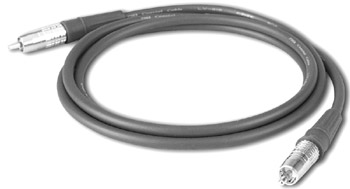
Figure 1-13: A composite video cable terminated with RCA connectors
Photo courtesy of Canare Corporation of America.
Speaker Wire
There are several types of speaker wire on the market. Typically, 16-gauge stranded twisted-pair wire or 14- to 18-gauge audio cable is used for an average length speaker run, with heavier wiring used for very long runs. The twist in the wire helps reduce the amount of EMI the wiring picks up.
The following terms are commonly used to describe speaker wire and its characteristics:
- Cable RatingsThe cable designed for a specific use is rated for that use. For example, a cable designed for installation inside a wall carries a premise wiring rating. Most speaker cable is not premise wiring rated. Premise wiring rated cable complies with the National Electric Code (NEC) and provides assurance to you and your customer that the design of the cable meets fire safety standards as well.
- GaugeThe wire gauge selected for a home A/V system should be chosen based on its properties and the distance of the wiring runs. Speakers have low impedance (4 to 8 ohms), which means the resistance in the wiring is key to determining how much of the audio signal will reach the speaker. For example, a 100-foot run of 16-gauge twisted pair wiring has a round-trip resistance of 0.8 ohms. When this wire is used with a 4-ohm speaker, 17 percent of the signal is lost to the resistance on the wire, which means only 83 percent of the sound signal actually reaches the speaker. The solution to this is the use of heavier wire. The wire sizes typically used for home A/V systems are 16 or 14 AWG (American Wire Gauge), which provide good compromises against signal loss, cost, and ease of installation. On top of that, the connectors on most audio devices are designed for these wiring sizes.
- Signal (power) lossTable 1-7 lists the maximum cable run distances for 16- and 14-gauge speaker wiring given the percentage of power lost to the cable due to line resistance. If you know the speaker’s impedance and acceptable loss numbers, you should be able to look up the right size wire to use and its maximum run length.
Table 1-7: Speaker Wire Signal (Power) Loss Table Speaker Ohms
Decibel Loss
Signal Loss
16 AWG Max. Run (feet)
14 AWG Max. Run (feet)
4
0.5
11%
60
100
4
1
21%
130
210
4
2
37%
290
460
4
3
50%
500
790
8
0.5
11%
120
190
8
1
21%
260
410
8
2
37%
580
930
8
3
50%
990
1580
Wire and Cable Characteristics
All wire has a number of performance properties and characteristics that limits the use of just any wire in any situation. The primary performance properties of metallic wire are
- AttenuationAs an electrical signal moves through a wire, it eventually reaches a point where it begins to lose its strength—the attenuation point. Beyond this point, the signal may become distorted or lost altogether. Every cable type is rated with an attenuation distance, which indicates its maximum run length.
- CancellationWhen two wires are not properly insulated or placed too closely together, the signal in one wire can be significantly impacted by the signal in the other wire. This is also referred to as phase cancellation.
- CrosstalkThis condition is caused when the signal in one conductor, which is also referred to as a channel, leaks into another channel and distorts its signal.
- InterferenceElectrical signals, in the form of electromagnetic (EM) or radio frequency (RF) waves, can penetrate a cable and distort or disrupt the signals being transmitted over the cable. The two most common types of interference are electromagnetic interference (EMI) and radio frequency interference (RFI). EMI is caused by strong electromagnetic fields emanating from nearby electrical devices, such as electrical motors, magnetic ballasts, and the like. RFI is caused by radio frequency electromagnetic waves, like radio and TV signals, that travel through the air and are picked up by the conductors or shielding of a cable.
- InductanceSignals carried on a wire typically have a varying current that produces a varying magnetic field and can create additional current in the same cable or a nearby cable. In a TP cable, the wires in each wire pair are twisted around each other to reduce electromagnetic induction between the wires.
Control Wiring
There are many different types of control systems in an automated home: lighting control, climate control, security, and perhaps even water control (as in controlling the lawn sprinklers).
The wiring that supports and interlinks the control system’s elements is readily available, inexpensive, and easily installed, especially in a new construction situation. Installing new control system wiring in an existing house can be more difficult, but there are alternatives to new wiring in these situations, such as powerline carrier (PLC) and phoneline systems, discussed in Chapter 10.
| Note |
Most control systems don’t require heavy duty wiring, generally only 22-gauge wiring or Cat 3 UTP cable, at a minimum. |
Bundled Cable
Structured wiring involves the installation of wire homeruns to each room, zone, or area of a home. There are two ways this can be accomplished: pulling each individual cable required separately or pulling in a cable bundle that includes all of the cabling runs required to support the needs of the room, zone, or area.
Using a structured cable bundle eliminates the guesswork of pulling individual cable runs to areas of the home in attempts to provide future capability to the home. A cable bundle pulled throughout a home provides additional capability and expandability to all areas of a home and can save on installation time.
Some cable bundles are enclosed inside a plastic outer sheathing to facilitate pulling the cable through the walls. Others connect the wires together in a zip wire form and others wrap the bundle with strands of plastic ribbons that can be easily removed to terminate the cables in the bundle at the distribution panel or the room outlets. Figure 1-14 illustrates some of the different cable bundle enclosures.
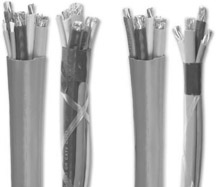
Figure 1-14: Examples of structured wiring cable bundle enclosers
Photo courtesy of Smarthome, Inc.
+2 Bundled Cabling
A standard cable bundle is the 2+2 cable that includes two runs of UTP Cat 5e cable and two runs of RG-6 coaxial cable. Since these four cable runs typically satisfy the distributed system needs of most homes, it is a very popular cable bundle for structured wiring.
+2+2 Bundled Cabling
Another popular cable bundle adds two runs of fiber optic cable to 2+2 bundle to provide for even more current capability and future proofing to a home. The two fiber optic cables are multimode strands that can be used for a wide range of current and certainly future applications.
Control Wire Bundles
There are several other types of structured wiring cable bundles, each with its own purpose. Some are variations of the 2+2 bundle with an additional run or UTP or coaxial cable included. However, one special purpose cable bundle is the control wire bundle.
Control wire bundles typically include a single run each of RG-59 or RG-6 coaxial cable and Cat 5e cable and two runs of 18-gauge stranded wire, which are used to cable keypads, room controls, intercoms with video, and for supplying power.
Common Home Automation Wire Types
For reference purposes, I’ve included Table 1-8, which lists some industry designations for common audio and video cable and wire types. Although there are no industry standards for the colors of the individual wires or the outer sheathing of structured wiring cables. For the most part, category UTP wiring has the same eight wire colors in four matched pairs, but the outer covering of other types of wire is available in a rainbow of colors. For best results, use the same color wire or cable for the same purpose throughout a home. This will make installation and troubleshooting a lot easier.
|
Subsystem |
Usage |
AWG |
Conductors |
Conductor Type |
Shielded? |
Cable Color |
|---|---|---|---|---|---|---|
|
Audio |
LV audio |
22 |
4 |
Stranded |
Shielded |
Yellow |
|
Speakers, security siren |
14 |
2 |
Stranded |
None |
Green |
|
|
Speakers |
16 |
4 |
Stranded |
None |
Blue |
|
|
Baseband video |
Composite video (cameras) |
RG6/RG59 |
1 |
Solid |
Shielded |
Black/White |
|
Communications |
Telephone and data |
25 (Cat 5e) |
8 |
Solid |
None |
Blue |
|
Fire detection |
Smoke and heat detectors |
18 |
4 |
Solid |
None |
Red |
|
IR control |
IR, LV wiring |
22 |
4 |
Stranded |
None |
Pink |
|
Security |
Door & window contacts |
22 |
2 |
Stranded |
None |
Gray |
|
Motion sensor, glass break |
22 |
4 |
Stranded |
None |
Gray |
|
|
Keypads |
22 |
4 |
Stranded |
None |
Gray |
|
|
Advanced keypad with voice pickup and playback |
18 |
2 |
Stranded |
Shielded |
Pink |
|
|
Driveway probe |
18 |
3 |
Stranded |
Direct burial |
Black |
|
|
Video |
Video signal |
RG6 |
1 |
Shielded Solid |
Shielded |
Black/White |
Table 1-8 provides includes some guidelines on which wiring type is recommended for particular subsystems, including a suggestion outer jacket color for the cables.
Test the Wiring
After what typically seems like miles of cable, speaker, coaxial, composite, and Cat 5 have been pulled into the walls, under the floor, or above the ceiling, and all of the connectors are attached and the wall plates are mounted, a second round of testing should be performed. Yes, a second round. The first round of continuity and attenuation testing should have been done immediately after each cable segment was pulled into place. At this point the wiring should be subjected to a full range of tests.
Even if you are absolutely sure of your work in soldering on the connectors and the connections made at the punch down block, always test the cable at this point in the process. Especially in new construction, a cable can be “nailed” or “screwed” when the drywall was attached to the wall.
The testing process includes two steps: a visual inspection and a “buzz out” of the wire. Of course, a visual inspection must be done before new walls are completed or from down in the basement or crawl space or up in the attic. You are looking for the obvious, nails or screws piercing the cable, or cuts, gashes, kinks, and breaks in the cable.
A buzz out test of the cabling involves the use of a cable tester, which is also referred to as a “fox and hound.” What a cable tester does is send an electrical signal through the cable. Some testers require connectors to work; others use a vibrating electrical noise that is placed on the wire by one device (the fox) and, hopefully, detected by the other device (the hound). This is a two-person job, period. Of course, all of the cables are labeled and documented on a wire chart. Completely test all wiring before beginning the fix-it process, if necessary.
For RG6 coaxial cabling, the testing should include a test for shorts, cable length, continuity, and cable termination. For Cat-5 or Cat-6 cables, testers are available that will verify compliance of your wiring runs and terminations to these standards.
| CROSS-REFERENCE |
Chapter 3 covers cable installation and testing in more detail. |
Review
When installing wire and cable in a home, you must be aware of the voltage specification of the cable in use. There are certain cable types that are specified as low voltage and those specified as high voltage. Low voltage cable is designed to carry lower levels of alternating current (AC) and direct current (DC) voltages.
Low voltage wiring is defined as being one of five types of circuits: communication circuits, signal circuits, remote control circuits, motor control circuits, and power-limited circuits. Low voltage circuits are divided into three circuit classes: power-limited, remote control and signaling, and direct current.
The most common types of electrical wiring used for home construction today are: modern non-metallic (NM), underground feeder (UF), and zip wire. Some older wire types you may encounter in a home are: flexible armored cable, metal conduit, early NM, and knob and tube.
The wire gauge used in a home depends on the number of amperes on a particular circuit. Remember that a smaller gauge means a bigger and less flexible wire. Heavier gauge wire should be used to avoid voltage drops and to overcome heat problems.
Twisted-pair (TP) wiring is by far the most popularly installed media for networking in just about any type of network for many reasons, including that it is inexpensive, easy to handle, and readily available. TP wire, Cat5, is the de facto standard for both Ethernet and Token Ring networks.
UTP cable carries a variety of rating codes, which are assigned by the product performance and safety authorities and testing laboratories. The primary rating codes for UTP cable are defined by the NEC (National Electric Code), published by the National Fire Protection Association, as CM, CMP, CMR. Twisted pair cable is available as shielded twisted pair (STP) and unshielded twisted pair (UTP).
Coaxial cable is constructed of a single inner core wire conductor that is encased in a layer of dielectric insulation, which is then wrapped by a wire mesh outer conductor and shield. A plastic sheathing covers the cable. Coaxial cable is single-ended cable with a single signal path and a single return path. RG6 is the most common coaxial cable installed in homes.
When an audio signal is transmitted, A/V cable stores (voltage) and releases (current) an electrical wave at certain frequencies and amplitudes and is generally combined under the term frequency. An audio/video signal consists of a collection of high and low frequency waves. An audio/video releases or passes an audio signal to the next component without slowing down the signal. A cable with the ability to release the signal at the right time is called in-phase.
A balanced audio cable uses both positive and negative carriers with a grounding carrier added. In an unbalanced cable, the grounding signals are combined onto the negative carrier.
Parallel or speaker wire is available in a variety of wire gauges, ranging from 8-gauge on the high end to 24-gauge on the low end.
There are a variety of cables that can be used with video systems. The primary types of video cable are: coaxial, component, and composite. Typically, 16-gauge stranded twisted-pair wire or 14- to 18-gauge audio cable is used for an average length speaker run.
The primary performance properties of metallic wire are: attenuation, cancellation, crosstalk, interference, and inductance.
Structured wiring involves the installation of wire homeruns to each room, zone, or area of a home. Structured wiring can be installed in two ways: pulling each individual cable separately or pulling a cable bundle. A 2+2 cable includes two runs of UTP Cat 5e cable and two runs of RG-6 coaxial cable. The 2+2+2 cable adds two runs of fiber optic cable to 2+2 bundle.
Control wire bundles typically include a single run each of RG-59 coaxial cable and Cat 5e cable and two runs of 18-gauge stranded wire, which are used to cable keypads, room controls, intercoms with video, and for supplying power.
Questions
- Which of the following is not a home circuit type?
- Communication circuits
- Signal circuits
- Wireless communication circuits
- Power-limited circuits
- What is the term that describes the metallic core of a wire?
- Armor
- Conductor
- Insulator
- Jacket
- What is the general name used for common household electric cable?
- Modern NM/Romex
- NMC
- UF
- Zip wire
- According to Table 1-2, what wire gauge should be used for a circuit with 30 amperes?
- 20 AWG
- 18 AWG
- 14 AWG
- 10 AWG
- When an audio cable is able to release all audio frequencies without adding delay, the cable is said to be
- Out-of-phase
- In-sync
- In-phase
- Synchronous
- Which cable type has a single inner core wire conductor and a wire mesh outer conductor?
- UTP
- STP
- Coaxial
- 16g-4
- Which type of audio/video cable includes carriers for both positive and negative signals, but also includes a grounding carrier as well?
- Coaxial
- Balanced
- UTP
- Parallel pair
- Which cable type resembles a lamp cord?
- Coaxial
- Balanced
- UTP
- Parallel pair
- What is the cable property that states the distance at which the signal traveling on a cable begins to weaken?
- Attenuation
- Cancellation
- Crosstalk
- Interference
- What is the common used term that describes a bundled cable with two runs of UTP and two runs of coaxial cable?
- UC cable
- Structured bundle
- 2+2
- 2+2+2
Answers
- C. Wireless communication circuits. By being wireless, these systems are not part of a house’s wiring structure.
- B. Conductor. A conductor has the ability to store and release an electrical current.
- A. Modern NM/Romex. Non-metallic cable is the currently accepted standard for general household electrical wiring.
- D. 10 AWG. This wire is rated for a 30-amp, 240-volt system.
- C. In-phase. The opposite is true when a cable releases lower frequencies later than its higher frequencies.
- C. Coaxial. Both the inner core (positive) and the outer conductor (negative) carry signals.
- B. Balanced. The balance comes from having conductors for both positive and negative signals and a separate conductor for grounding but on other cables may be combined onto the negative carrier.
- D. Parallel pair. This cable looks very much like a lamp cord and is also referred to as rip cable for the ease with which the two conductors can be separated.
- A. Attenuation. Attenuation can be overcome with shorter cable runs or a signal extender, such as a repeater.
- C. 2+2. This type of cable combines two runs of UTP and two runs of coaxial cable into a single cable bundle that is easier to install and provides for future expansion of the home system.
Part I - Home Technology Installation Basics
- Wire and Cable Basics
- Connector Types and Uses
- Wiring Installation Practices
- Codes, Standards, and Safety Practices
Part II - Structured Wiring
- Infrastructure Wiring Basics
- Planning a Structured Wiring Installation
- Rough-In Installation
- Trim-Out Installation
- Troubleshooting Structured Wiring
Part III - Home Computer Networks
- Computer Network Basics
- Computer Network Hardware
- Computer Network Software
- Designing and Installing a Computer Network
- Troubleshooting a Home Network
Part IV - Audio/Video Systems
- Distributed Audio System Basics
- Designing and Installing Distributed Audio Systems
- Distributed Video Basics
- Designing and Installing Distributed Video Systems
- Troubleshooting Audio Systems
- Troubleshooting Video Systems
Part V. Home Lighting Management Systems
- Home Lighting Basics
- Home Lighting Devices
- Designing a Home Lighting Control System
- Installing a Home Lighting Control System
- Troubleshooting and Maintaining Lighting Control Systems
Part VI - Telecommunications
- Home Communication System Basics
- Designing and Installing a Home Telephone System
- Troubleshooting a Home Communication System
Part VII - HVAC and Water Management
Part VIII - Security System Basics
- Security System Basics
- Designing a Home Security System
- Installing a Home Security System
- Troubleshooting and Maintaining a Home Security System
- Home Security Surveillance Systems
- Home Access Control Systems
Part IX - Home Technology Integration
- Defining Users Needs and Desires
- User Interfaces
- Home Automation Controllers
- Programming
- Integrating the Connected Home
- Other Home Technology Integration Devices
Part X - Appendices
EAN: N/A
Pages: 300
